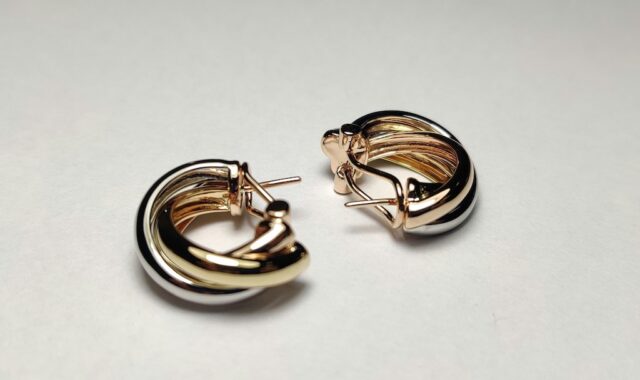Italian Jewelry: A Blend of Traditional Craftsmanship and Contemporary Design
Italian jewelry has a storied legacy that intertwines with the very fabric of Italian culture. Known for its exquisite craftsmanship and timeless designs, Italian jewelry has evolved from simple religious artifacts to some of the most coveted high-fashion pieces in the world.
This journey is not just about the evolution of design but also about the blending of tradition, religion, and modernity that has made Italian jewelry a global icon of luxury.
The Origins of Italian Jewelry
The history of Italian jewelry dates back to ancient times, when early designs were deeply influenced by religious and cultural beliefs. The Etruscans, who inhabited the Italian peninsula before the rise of the Roman Empire, were among the first to create intricate jewelry pieces. These early designs often featured motifs from nature and the divine, serving as amulets or symbols of protection.
Religious Symbolism in Italian Jewelry
Religion has played a pivotal role in shaping Italian jewelry. With the spread of Christianity throughout the Roman Empire, religious symbols became integral to jewelry design. Crosses, crucifixes, and medallions depicting saints or the Virgin Mary were commonly worn as expressions of faith. These pieces were often passed down through generations, becoming family heirlooms with deep spiritual significance.
The Renaissance and the Evolution of Craftsmanship
The Renaissance period marked a golden age for Italian jewelry, as the art of goldsmithing and gem-setting reached new heights. Italian craftsmen became renowned for their ability to create intricate designs using advanced techniques like enameling and filigree. During this era, jewelry was not just a symbol of wealth but also an expression of artistic prowess. The influence of the Renaissance can still be seen in the ornate designs and attention to detail that characterize Italian jewelry today.
The Influence of Italian Nobility
The Italian nobility played a crucial role in setting jewelry trends during the Renaissance and beyond. Wealthy families like the Medici and the Borgias commissioned elaborate pieces to showcase their power and status. These families had a significant influence on the jewelry trends of the time, with their lavish tastes helping to popularize certain styles, such as the use of large, colorful gemstones and detailed portrait cameos.
The Transition to High Fashion
As Italy became a hub for art, culture, and fashion, jewelry began to transition from purely religious and noble adornments to high-fashion accessories. This shift was significantly influenced by Italian fashion houses, which started to incorporate jewelry into their collections as statements of elegance and style. The post-World War II era saw a boom in Italian fashion, with jewelry playing a central role in defining the chic and sophisticated look that Italian designers became famous for.
Iconic Italian Jewelry Brands
Today, Italian jewelry is synonymous with luxury, thanks in large part to iconic brands like Bulgari, Buccellati, and Damiani. These brands have become global leaders in the jewelry industry, known for their innovative designs and commitment to quality. Bulgari, for instance, is celebrated for its bold use of color and geometric patterns, while Buccellati is renowned for its intricate, lace-like designs that pay homage to the techniques of Renaissance goldsmiths.
Craftsmanship and Techniques
One of the defining features of Italian jewelry is the emphasis on craftsmanship. Many Italian jewelers still rely on traditional, handmade techniques that have been passed down through generations. Techniques like granulation, where tiny beads of gold are fused onto a surface to create intricate patterns, and micromosaic, which involves assembling tiny pieces of glass or stone to create detailed images, are hallmarks of Italian jewelry.
Materials Used in Italian Jewelry
Italian jewelry is crafted using a variety of precious metals and gemstones, with gold being the most prominent. Italian gold, particularly 18-karat gold, is prized for its rich color and durability. In addition to gold, Italian jewelers are known for their use of vibrant gemstones like emeralds, sapphires, and rubies. Over time, Italian designers have also begun to experiment with non-traditional materials, such as ceramics and unconventional gemstones, to create unique and contemporary pieces.
Modern Italian Jewelry
In the modern era, Italian jewelry continues to be at the forefront of design innovation. Contemporary Italian jewelers are known for their ability to blend tradition with modern aesthetics, creating pieces that are both timeless and trendy. The use of minimalist designs, mixed metals, and asymmetrical shapes reflects the evolving tastes of today’s consumers while staying true to the craftsmanship that defines Italian jewelry.
The Role of Italian Jewelry in Pop Culture
Italian jewelry has left an indelible mark on pop culture, with its pieces frequently adorning celebrities on red carpets and in films. From the opulent necklaces worn by Elizabeth Taylor to the elegant bracelets sported by modern-day stars like Angelina Jolie, Italian jewelry has become synonymous with luxury and sophistication. These pieces are not just accessories but statements of style and status, often becoming iconic in their own right.
Sustainability in Italian Jewelry
As the global conversation around sustainability grows, Italian jewelers are increasingly adopting eco-friendly practices. From sourcing conflict-free gemstones to using recycled metals, many Italian brands are committed to reducing their environmental impact. This shift towards sustainability is not only a response to consumer demand but also a continuation of Italy’s tradition of quality craftsmanship—ensuring that each piece is made with care for both the wearer and the planet.
Investing in Italian Jewelry
Italian jewelry is not just a symbol of style; it’s also a valuable investment. Pieces from renowned Italian brands often appreciate over time, making them a wise choice for collectors and investors. When investing in Italian jewelry, it’s important to consider the brand, the quality of the materials, and the uniqueness of the design. Vintage pieces from established brands can be particularly valuable, as they represent a piece of jewelry history.
Italian Jewelry in the Global Market
Italian jewelry is highly regarded in the global market, with Italy being one of the top exporters of fine jewelry. Italian designs are especially popular in markets like the United States, Japan, and the Middle East, where consumers appreciate the blend of traditional craftsmanship and contemporary design. The global demand for Italian jewelry continues to grow, solidifying Italy’s position as a leader in the luxury jewelry industry.
Conclusion
From its religious beginnings to its status as a global fashion statement, Italian jewelry has undergone a remarkable evolution. It represents a unique blend of tradition, art, and innovation that has captured the hearts of jewelry lovers around the world.
Whether you’re drawn to the historical significance of a piece or its modern-day allure, Italian jewelry offers something truly special. It’s not just an accessory; it’s a piece of art that tells a story.




